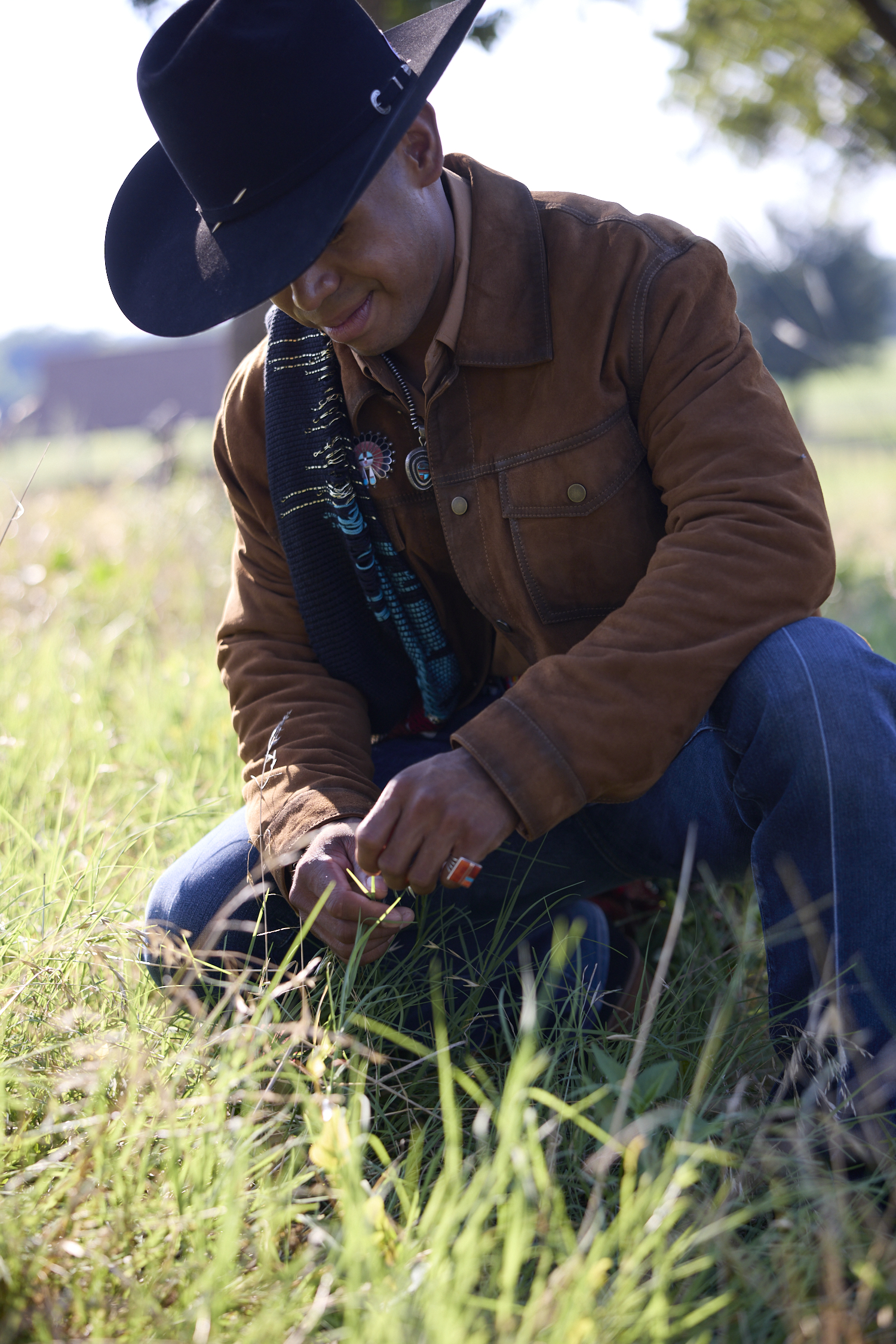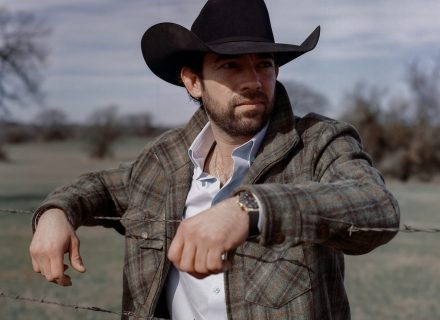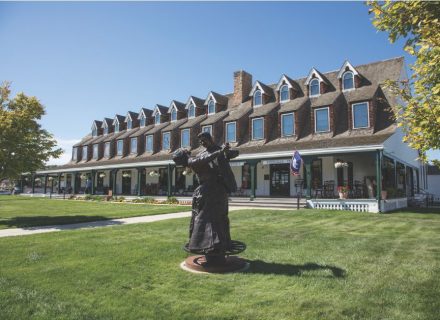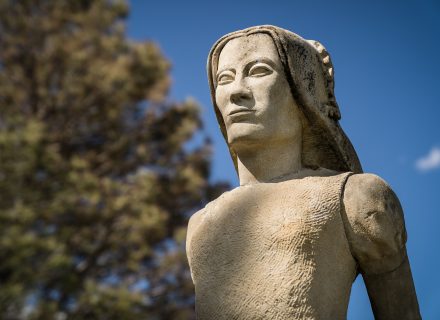Amidst the bustle and bright lights of the rodeo circuit, Keyshawn Whitehorse always manages to find his way back home.
After growing up under the stars and wide-open spaces of Salt Lake City, Utah, Keyshawn Whitehorse (Navajo) has climbed to the top of the rodeo scene. The Arizona Ridge Rider has focused his efforts toward challenging Indigenous youths to take their talents beyond the reservation.
Keyshawn Whitehorse sat down with C&I to discuss growing up on the reservation and using his Indigenous heritage to center himself when things get tough.
C&I: How did rodeo find you?
Keyshawn Whitehorse: I think it was kind of destined for me, because the Days of 47 Rodeo was going on in Utah during the time I was born. It’s one of the biggest rodeos there. I lived on the Navajo Reservation on the southeast border of Utah. I got into bull riding at a very young age. I was about five years old when I figured out that’s something I wanted to do. My dad was watching the NFR whenever I was a child, and I woke up and sat on the couch watching the bull riding. I said, “I want to do that, dad.”
There was a small tack store called Triple R Traders. He went over there the next day and bought me some spurs, little calf rope, and some shafts and stuff, and got me started that way. My dad rode bulls too when he was younger, so he didn’t know much, but he knew how to start. Everything I know about bull riding, at the very beginning, was just my dad and I learning it together. He had an old Gary Leffew bull riding school tape on a VHS, and we’d watch that. If it wasn’t for him, I wouldn’t be where I am. I feel like if I didn’t have that push, I would have still done it, but I wouldn’t be where I am.
C&I: Where did you go from there?
Whitehorse: I went to a rodeo school. My dad built me a bucking barrel at the house. It’s just three cables, three posts, and then the barrel sits in the middle. And that’s how I got my start. I went to some bull ridings and stuff around the reservation. When I was younger, we’d look in the Navajo Times sports section. It would show all the upcoming rodeo events. That’s how I’d enter up when I was younger.
C&I: Your family made a pretty big shift from Utah to Texas when you were a kid, right?
Whitehorse: My mom’s job took us to Texas at a young age, so we were always going back and forth. When we moved to Texas, it was a huge culture shock. Growing up, we didn’t have running water at our house. Electricity came around the time I was born, and then plumbing came around the time I was growing up. So, I remember not having plumbing. My grandpa had a big diesel truck and a huge water tank. We would go to this oasis and fill up the truck of water and haul it back.
Going from that to Texas, I had no idea about anything. All the sudden, we have water. We have a restroom. Going to sleep at night, instead of it being complete silence, you’ll hear more noise than usual. That was one of the biggest transitions. I went to school in Blanding, [Utah], where there were a bunch of Native kids. Then, I go from that to Texas and being the only Native kid. I remember some of the kids asking me if we lived in teepees back home. And I’m like, “No, we have a house.”
C&I: What does the Western lifestyle mean to you?
Whitehorse: The Western lifestyle is embedded within all of us in the Native American culture. Rodeo is so big on the reservation. Everybody has at least tried it. It’s very impactful to the Native American community to see guys like us from the area that they’re from. It’s giving opportunity and hope. I think that’s the biggest thing that I enjoy — seeing the youth wanting to go and do better. There’s so much talent on the reservation, and it’s always locked there. We’ve seen it over and over again. You got kids on the reservation practicing at home. And you run hills, you carry rocks. That’s how I worked out — running hills, carrying rocks, working on fence around the house, stuff like that. That’s how we train. For me, it was always putting my culture within my training and my riding. A big thing on the Navajo reservation is to go for a run early in the morning because that’s when the holy people are out. You pray while you run.
C&I: What are the aspects of your hometown that you love the most?
Whitehorse: It’s a very rural place. Utah is desert. It’s very beautiful in its own way. The town of Blanding has a mountain, and you can see the mountain when you’re riding along the mesa from our place. It’s just my favorite thing about it, especially after going to PBR events in big cities like New York City and Chicago and California, all these places where it’s just tons of people, and it’s so much stimulation. My favorite part about when I get back home is that you don’t hear anything. It’s silent and it’s peaceful. At night, the only lights are the lights of other people’s houses. Other than that, it’s pitch black, and you can see all the stars. You can see the Milky Way. It allowed me to decompress. I think every time I’m going through a struggle area of my life or I feel like my life’s moving very fast, I can always go back there and be recentered.
Being there on the rez, it’s our safe zone, our haven which is between the four sacred mountains. I think that’s where I find my peace. My dad always told me, “You might go different places. It might be super green grass. And here it’s dirt and stuff. But this is home.” And it really is. We always found a way and managed to get home.”
C&I: You were named the PBR Rookie of the Year in 2018. Tell us about the journey to that success.
Whitehorse: That is a big stepping stone within my career. Every year, my family and I would go to the AT&T Stadium and watch the Last Cowboy Standing. I watched Colby Yates when he won it. The year after I turned 18 and joined the PBR, my older brother said, “If you don’t make it to the Iron Cowboy, we’re not going to go, because what’s the point? Now you’re able to make it, so if you don’t, then we’re not going to go.”
I was having a tough season. I went to this touring pro in Fort Worth, and I had entered up for Velocity that same weekend in Reno, Nevada. I had just enough money to pay for my entry fees for Fort Worth. I didn’t have enough money to pay for my entry fees in Reno, so I call my aunt and I say, “Can I get some money for entry fees?” And she says yes. She’s always been there to support me. I ride my bull in Reno, but I don’t make it to the short run, and I’m just heartbroken. I was putting in so much work and it just didn’t transfer over into my performance.
There was an amateur event. It was called the NPBR (National Professional Bull Riders) in Mercedes, Texas. I asked my aunt one more time for some money for entries and I go down there not really knowing how it’s going to go. I end up winning the Finals and winning a pretty good amount of money. Salt Lake City was the last chance to get into the Iron Cowboy. I go there just off the momentum from the amateur event, and I end up winning Salt Lake City. I call my brother and I say, “Guess what? We’re going to the Last Cowboy Standing. We’re going to AT&T.” That was super amazing going from standing in this building and saying, “I’m going to be there one day,” to saying, “I made it.” That is probably the proudest I’ve been.
Follow Keyshawn Whitehorse on Instagram @keyshawnwhitehorse and check him out in our 2024 fall fashion look book.
ON KEYSHAWN: American Hat Company 50X-1,000X felt hat, shop.besthatstore.com; Texas Lightning poncho, rhiannongriego.com; Necklace and pin, notahdineh.com; Blackout shirt, kimesranch.com; Snap front leather jacket, scullyleather.com; Belt, buckle, and Ariat jeans (Keyshawn’s own).
PHOTOGRAPHY: Sara Forrest




















